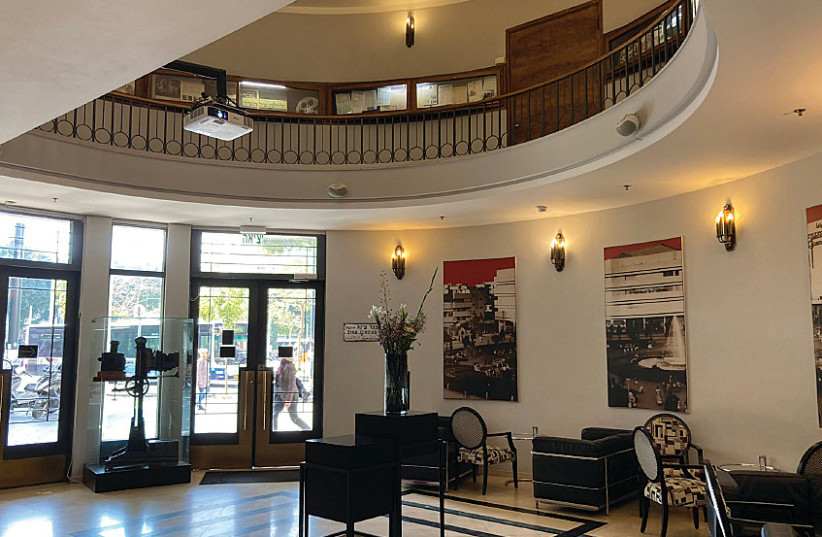Anyone who enters the Hotel Cinema on Dizengoff Square in Tel Aviv today immediately feels transported back to the time when the hotel was still a cinema and the first films in Tel Aviv were shown here in the 1930s. But anyone who enters the former Esther Cinema not only becomes a contemporary witness to former cinematic art, but also to the Bauhaus architecture that still characterizes the center in Tel Aviv today and under the name The White City has been a Unesco World Heritage Site, since 2003.
It may initially come as a surprise that 4,000 km. away in Mumbai, India, the entrance area of the Eros Cinema bears a striking resemblance to the lobby of the Esther Cinema. But the round, simple design of the entrance areas and the use of the same materials leave no doubt that the respective architects were influenced by the same style.
A current exhibition in the gallery of the Bauhaus Center in Tel Aviv contrasts the similarities between the Bauhaus architecture of Tel Aviv and the Art Deco architecture in Mumbai. The 16 exhibits include the comparison of the Esther and Eros Cinemas.
The idea for the joint exhibition
Micha Gross, curator of the exhibition and founder of Bauhaus Center had originally planned to show his permanent exhibition on Tel Aviv’s Bauhaus architecture, which has already been shown in Germany, Italy and the Netherlands, among other countries, in India, at the invitation of the Israeli Consulate in Mumbai. When the Art Deco Mumbai Foundation heard about the planned exhibition, it contacted Gross and drew his attention to the similarities between the architecture of the two cities. Thus the idea for the joint exhibition was born.
Gross then sent photos of The White City to the Art Deco Mumbai Foundation – including entrance areas of apartment buildings, balconies typical of the Bauhaus style, but also front doors and windows. In Mumbai the Foundation then set out to find their counterparts.
“We knew, of course, that India was also part of the British Empire, but when we sent the photos to Mumbai, we didn’t know what the outcome would look like.”
Micha Gross
The result surprised even Gross. “We knew, of course, that India was also part of the British Empire,” he says, “but when we sent the photos to Mumbai, we didn’t know what the outcome would look like.” As of 2018, the Victorian and Art Deco Ensemble of Mumbai is also a Unesco World Heritage Site. Art Deco, or Indian style, differs partly in its embellishments and decorations, while Bauhaus, or International style, eschews flourishes and ornamentation altogether.
After the Nazis seized power in Germany in 1933, a number of European architects whose style was influenced by the German Bauhaus school flocked to Tel Aviv. At the same time, the city’s population growth increased exponentially, so new housing was needed. Thus was born what is now the world’s largest ensemble of Bauhaus-style buildings.
Gross founded Bauhaus Center in Tel Aviv 23 years ago. Minimalism had piqued the interest of the sleep psychologist, who came to Tel Aviv from Switzerland 28 years ago. Since then, Bauhaus Center has been offering exploring tours throughout the city.
The exhibition can be visited until December 31 at the Bauhaus Center, 77 Dizengoff Street, Tel Aviv. Admission is free of charge.













